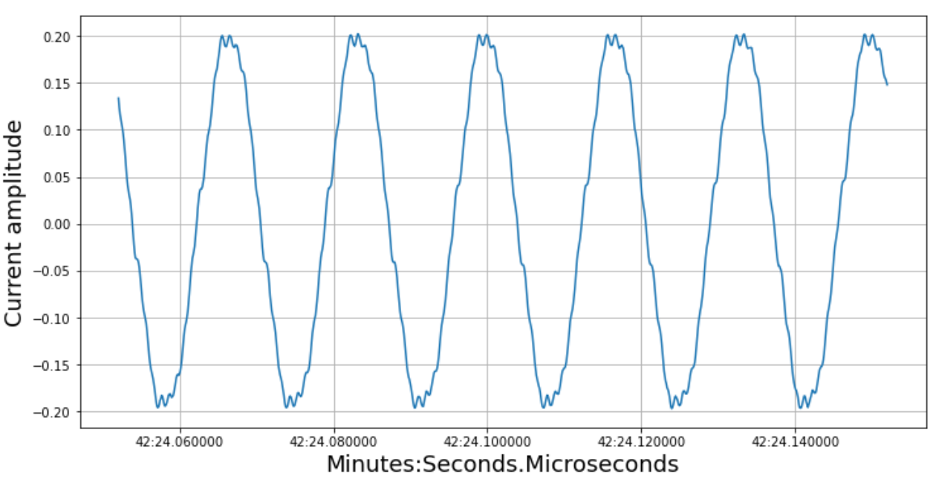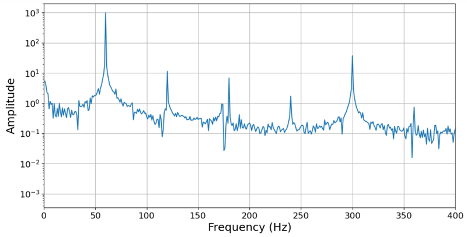Proactive Fault Detection in Motors

Pelin Kurt Garberson
Enabling Predictive Maintenance for your manufacturing workhorses
Electric motors are essential in industry. They power everything from our turbines to compressors, pumps, blowers, fans, paper mills, alternators, and many other machines. But they are not cheap. They're expensive to buy, expensive to maintain, and power hungry. Estimates updated by the Department of Energy (DOE) in 2021 say that electric motors consume 69% of all industrial electrical usage in the United States. Keeping electric motors healthy is essential not just for smooth operation of a plant but also for efficiency and keeping energy budgets under control.
In this post, we will talk about anomaly detection for asynchronous three phase electric motors, the most common motors in industrial settings. These motors are known for being powerful, robust, and relatively cheap compared to other types of motors. However, even these workhorses develop problems and break down.
Let's talk about how we identify the faults developing in these motors!
Fault identification strategies
There are two common strategies for automatically identifying faults in induction motors: vibration analysis and current analysis. Vibration analysis uses high-frequency readout accelerometers mounted near the roller bearings within the motor. Current analysis uses high-frequency readout current sensors that monitor the current draw within one or more of the motor's three phases. Both approaches can identify the majority of common faults within a motor, and when used together, they provide a comprehensive and highly accurate picture of the current and future health of motors.
Let's talk through an example of identifying stator faults using current signature analysis.
Example: Identifying stator faults with high-frequency current analysis
The stator is an essential part of the motor. The rapidly oscillating current flowing through densely packed wires in the stator induces magnetic fields that drive the rotor. However, there are a number of ways that this can break down. Estimates show that stator faults account for about 40% of all faults in induction motors. Sometimes these are obvious and destructive. For example, a phase-to-phase short may cause sparks and smoke to start rising that an operator would quickly notice (and probably lead to them just deciding to replace the motor). Subtler problems, such as a within-phase winding short, may lead to gradually building damage and performance problems that are not immediately noticed.
If a within-phase winding short is not identified, it may quickly develop into other problems. As the motor runs, it could lead to high current draw in the problematic phase. This would usually result in high heat and rapid degradation of insulation in that area of the motor, likely spreading to more severe stator damage. This could also introduce imbalance into the motor operation, leading to unbalanced running, vibrations, reduced performance, lower efficiency, and increased wear in other motor components. It can even cause risks of a fire hazard.
Fortunately, current signature analysis gives us a straightforward way to detect such shorts before damage becomes too severe. As explained in this motor current signature analysis study, the presence of these shorts leads to high frequency beats that can be picked up within the current data.
Diagnosing shorts from frequency data
Transform the current data, which normally looks like this:

Into a frequencies spectrum like this (using a data transformation technique such as a Fourier transformation):

The natural current frequency in the US is 60 Hz, so we see a very strong peak at 60 Hz and some other much smaller peaks. If there is a within-phase winding short, we expect to see a series of distinctive peaks in this spectrum based on the motor physics. In this case, we do not see the peaks matching this expected pattern; therefore, we conclude that there is no within-phase winding short present.
Similar to winding faults, current analysis of this kind can identify other common motor faults, including bearing degradation, broken bars, eccentricity faults, and general mechanical aging.
In sophisticated AI tools, these physics-based principles are embedded in the diagnostic and prognostic software. This allows a machine operator to have an AI monitor each motor, detect patterns that correspond to winding shorts, and alert the user without any in-person inspection or calculation needed. In fact, this is exactly how we address the problem here at Novity.
The business implications
Now, transitioning from the technical intricacies, let's delve into the broader business implications of implementing such sophisticated monitoring systems within production processes and manufacturing facilities.
By using AI tools that understand motor physics at this level on production lines and manufacturing operations, companies can realize significant advantages in terms of efficiency, productivity, and cost-effectiveness. Here's how:
- Predictive Maintenance for Motors and Downtime Reduction: The ability to detect motor faults before they escalate into critical failures allows for proactive maintenance scheduling. By addressing issues early, unplanned downtime due to motor failures can be minimized, leading to improved production continuity and reduced losses associated with halted operations. According to the DOE, using predictive maintenance can result in as much as 45% downtime reduction.
- Optimized Performance and Quality Assurance: Early detection of faults helps maintain the optimal performance of machinery, ensuring consistent product quality. This is particularly crucial in industries where precision and reliability are paramount, such as automotive manufacturing or electronics assembly.
- Enhanced Equipment Lifespan: Timely identification and mitigation of potential faults contributes to prolonging the lifespan of critical equipment, reducing the need for frequent replacements and associated capital expenditures. This translates to long-term cost savings and improved return on investment for manufacturing assets.
- Compliance and Safety: Proactively addressing equipment issues not only improves operational efficiency but also enhances compliance with regulatory standards and safety protocols. Minimizing the risk of equipment failures reduces the likelihood of accidents or incidents, safeguarding both personnel and assets. Winding shorts, in particular, carry the risk of fire if not identified and addressed promptly.
In essence, the integration of sophisticated AI tools not only mitigates operational risks but also empowers businesses to operate more efficiently, safely, competitively, and sustainably in today's dynamic manufacturing landscape. By prioritizing predictive maintenance, especially for your mission critical motors, and leveraging AI tools that understand the machine physics of these motors, organizations can unlock substantial business benefits while maintaining a proactive stance towards equipment reliability and performance optimization.
Learn More
You can learn more about how Novity's TruPrognostics AI enables Predictive Maintenance for all your mission critical motors by visiting our solutions page or scheduling a call with the Novity team.


